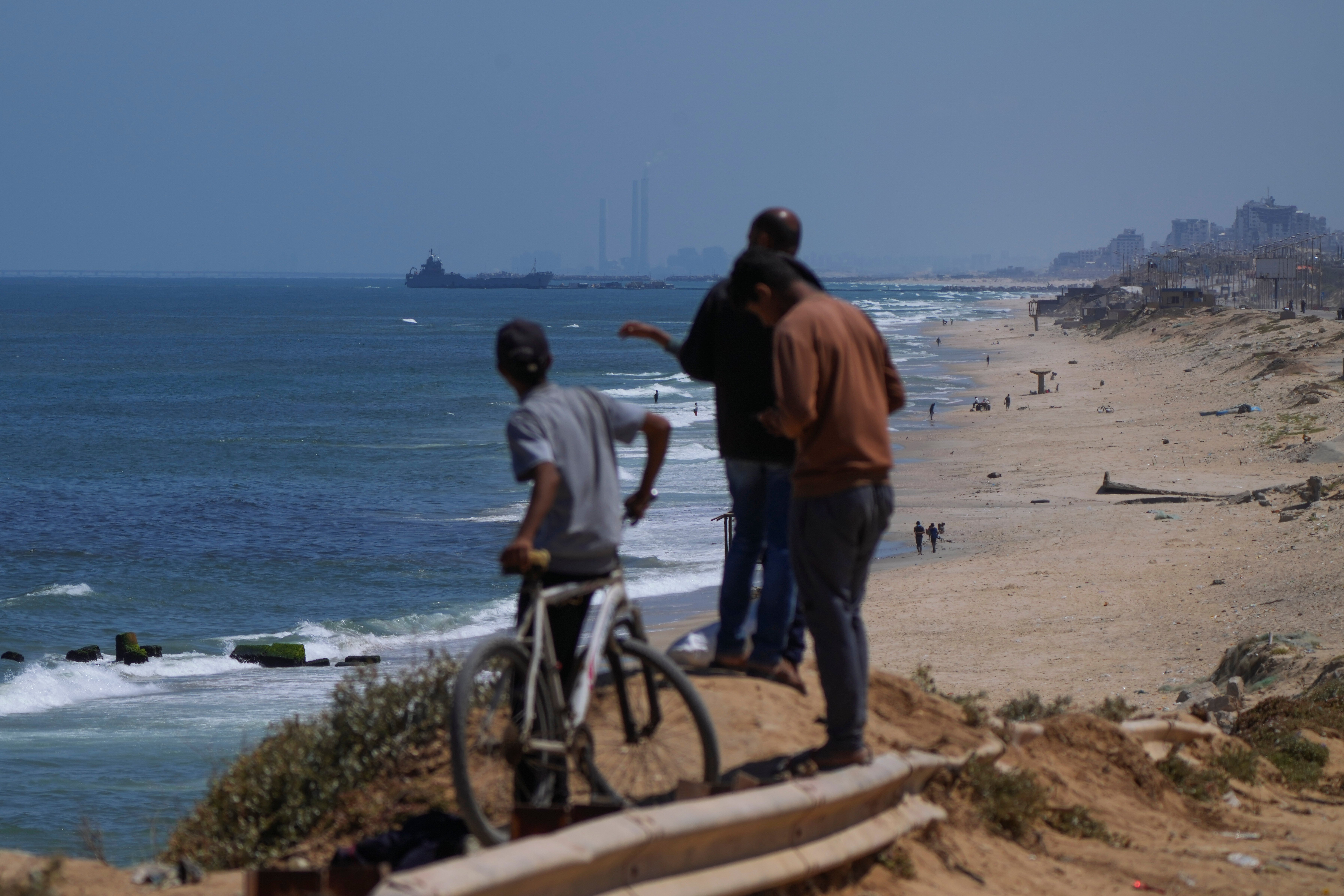Humanitarian aid begins flowing into Gaza from US-built floating pier
Trucks containing supplies moved into Gaza on Friday morning
Your support helps us to tell the story
From reproductive rights to climate change to Big Tech, The Independent is on the ground when the story is developing. Whether it's investigating the financials of Elon Musk's pro-Trump PAC or producing our latest documentary, 'The A Word', which shines a light on the American women fighting for reproductive rights, we know how important it is to parse out the facts from the messaging.
At such a critical moment in US history, we need reporters on the ground. Your donation allows us to keep sending journalists to speak to both sides of the story.
The Independent is trusted by Americans across the entire political spectrum. And unlike many other quality news outlets, we choose not to lock Americans out of our reporting and analysis with paywalls. We believe quality journalism should be available to everyone, paid for by those who can afford it.
Your support makes all the difference.Trucks carrying humanitarian aid, including food and temporary shelter, are starting to head into Gaza via a US-constructed temporary pier, less than a day after it was completed.
The trucks began moving into the enclave at around 9am local time on Friday, US Central Command (Centcom) said in a statement.
No US military personnel set foot in Gaza in conjunction with the operation, it said.
“This is an ongoing, multinational effort to deliver additional aid to Palestinian civilians in Gaza via a maritime corridor that is entirely humanitarian in nature, and will involve aid commodities donated by a number of countries and humanitarian organisations,” Centcom wrote on X, formerly Twitter.
The aid delivery system became operational in less than 24 hours after the pier, known as a Joint Logistics Over-the-Shore system (JLOTS), was towed from the Israeli port of Ashdod and installed on Thursday morning.

Boats carrying supplies were expected to be chaperoned by US Navy vessels to move its stockpiles from the pier to the causeway, which is anchored to land, Centcom said. Trucks would then drive the supplies along the causeway ashore.
The JLOTS system promises to provide more packages than air drops, as Israel’s military assault has shut off a number of crossings that are crucial for supplies to reach Palestinian civilians.
Gaza’s main entry point from which it disseminates aid is the Rafah crossing. The once-perceived Palestinian “safe zone” has been embroiled in an Israeli ground assault, resulting in the crossing to shut for nearly two weeks – causing furor among world leaders.
US President Joe Biden has been vocal in his frustration with Israel’s operations in Rafah, calling its offensive on the city as “wrong” and warning it will stop the supply of certain weapons if the assault proceeds.

Israeli Prime Minister Benjamin Netanyahu told CNBC that “we want to see it [the Rafah crossing] open,” before blaming Egypt for the delay.
While the United Nations (UN) thanked the US for its efforts, it warned a floating dock wasn’t a concrete solution for the flow of aid into the besieged region.
UN spokesperson Farhan Haq said the antidote would be for “all crossing points to be opened,” with land routes remaining the most efficient logistical method of transporting aid into Gaza.
US State Department spokesman Vedant Patel said that the pier was meant to be “additive to the other routes,” not the primary means of supplying humanitarian aid to desperate Palestinians.
It comes as stockpiles of food in the region are “running out” with “almost none left”, Martin Griffiths, the UN’s aid chief, told Reuters.
The JLOTS system was assembled and waiting in Ashdod earlier this month, costing the US an estimated $320 million.
Components of the pier were shipped from Virginia to the Mediterranean in March after Mr Biden announced plans for JLOTS in his State of the Union address.

Join our commenting forum
Join thought-provoking conversations, follow other Independent readers and see their replies
Comments